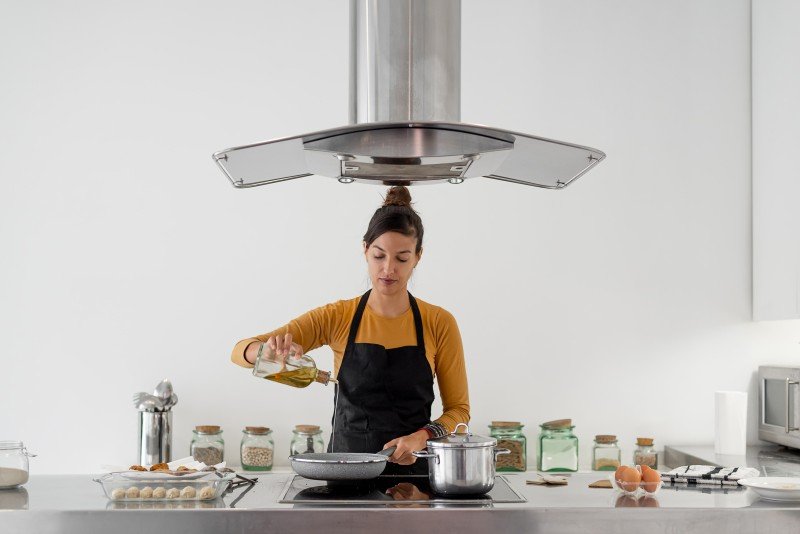9 . What Your Parents Teach You About Hobs And Ovens

Understanding Hobs and Ovens: A Comprehensive Guide for Cooking Enthusiasts
The kitchen is often related to as the heart of the home, where cooking creations come to life. 2 important components of any kitchen are the hob and the oven. While they are both vital for cooking and cooking, many property owners may not completely comprehend the differences, performances, and different types offered in the market today. In this post, we will check out these appliances in information, helping you make informed decisions for your cooking requirements.
Table of Contents
- What is a Hob?
- 1.1 Types of Hobs
- 1.2 Benefits of Different Hob Types
- What is an Oven?
- 2.1 Types of Ovens
- 2.2 Benefits of Different Oven Types
- Choosing the Right Hob and Oven for Your Kitchen
- Often Asked Questions (FAQs)
- Conclusion
What is a Hob?
A hob, commonly understood as a cooktop, is a cooking surface area that you position cookware on to prepare food. It includes a variety of heating elements and is regularly installed on counter tops. In contemporary kitchen areas, hobs are available in numerous styles, technologies, and performances.
1.1 Types of Hobs
There are several kinds of hobs available in the market:
| Type | Description |
|---|---|
| Gas Hob | Utilizes burner for cooking, using exact temperature control. |
| Electric Hob | Operates utilizing electrical heating elements, typically seen in solid or glowing kinds. |
| Induction Hob | Utilizes magnetic fields to heat pots and pans directly, promoting energy efficiency. |
| Ceramic Hob | Features a smooth glass top, utilizing electric coils beneath the surface. |
| Strong Plate Hob | Traditional electric hobs with exposed metal plates that warm up. |
1.2 Benefits of Different Hob Types
Gas Hobs:
- Quick cooling and heating.
- Visual flame control for accurate cooking.
Electric Hobs:
- Even heating; perfect for simmering and boiling.
- Easy to clean up, particularly flat surface areas.
Induction Hobs:
- Energy-efficient as just the pot warms up.
- Safety functions, such as automated shut-off.
Ceramic Hobs:
- Attractive aesthetics with a smooth surface.
- Even surfaces for simple cleaning.
Strong Plate Hobs:
- Cost-effective and durable.
- Great for standard cooking needs.
What is an Oven?
An oven is a kitchen appliance used for baking, roasting, and broiling food. Ovens can be standalone units or built into kitchen cabinetry, providing various cooking approaches that can improve or change components.
2.1 Types of Ovens
Comparable to hobs, there are multiple kinds of ovens, each with its advantages:
| Type | Description |
|---|---|
| Traditional Oven | Operates with heating aspects, ideal for baking. |
| Stove | Uses fans to flow hot air, cooking food uniformly and rapidly. |
| Microwave | Cooks food utilizing electromagnetic radiation; suitable for reheating. |
| Steam Oven | Uses steam to cook food, protecting moisture and nutrients. |
| Wall Oven | Built into the wall, using benefit and visual appeal. |
2.2 Benefits of Different Oven Types
Traditional Ovens:
- Simple to use without any complex settings.
- Versatile for different cooking methods.
Convection Ovens:
- Faster cooking times due to air circulation.
- Enhanced browning and crisping for baked items.
Microwave Ovens:
- Quick cooking or reheating of food.
- Energy-efficient for low-volume cooking.
Steam Ovens:
- Health-conscious cooking that retains nutrients.
- Outstanding for baking bread and cooking veggies.
Wall Ovens:
- Convenient placement; conserves space.
- Less bending needed to gain access to cooking meals.
Choosing the Right Hob and Oven for Your Kitchen
When picking a hob and oven, aspects such as space, cooking design, and personal choices should be considered. Here's a basic guide to assist you select:
Factors to Consider
- Cooking Needs: Evaluate your cooking habits. Do you often bake, or is stovetop cooking more common?
- Space Availability: Measure your offered kitchen area. Some hobs or ovens might require more space than others.
- Fuel Type: Decide in between gas and electric, based on accessibility and personal preferences.
- Spending plan: Determine what you're prepared to spend and discover choices within that variety.
Quick Tips
- Focus on Efficiency: Look for energy-efficient models to decrease long-term expenses.
- Check out Reviews: Explore user evaluations to gather opinions on performance and reliability.
- Consult Professionals: Seek guidance from kitchen design experts when preparing your layout.
Often Asked Questions (FAQs)
1. What is the distinction in between a hob and an oven?
A hob is a cooking surface area generally for stovetop cooking, while an oven is an enclosed area utilized for baking, roasting, and broiling food.
2. Can I utilize any pot on an induction hob?
No, induction hobs need magnetic pots and pans. ovensandhobs.uk and cast iron pots work, but non-magnetic products like aluminum won't.
3. How do stove differ from traditional ovens?
Convection ovens utilize fans to circulate hot air for even cooking, whereas conventional ovens do not have this function.
4. Is it possible to have both a hob and oven as a single unit?
Yes, there are variety cookers that integrate a hob and an oven within one device, offering an extensive cooking service.
5. How do I tidy my hob and oven?
The majority of hobs and ovens have advised cleansing approaches depending on their materials. It is recommended to consult the maker's instructions for the best practices.
Comprehending the differences between hobs and ovens is essential for anybody seeking to enhance their kitchen space or enhance their cooking skills. By understanding the different types, their advantages, and how to select the ideal ones for your needs, cooking can become a more satisfying and effective experience. Whether you are a skilled chef or a novice cook, the right combination of hob and oven can raise your cooking developments to new heights.

